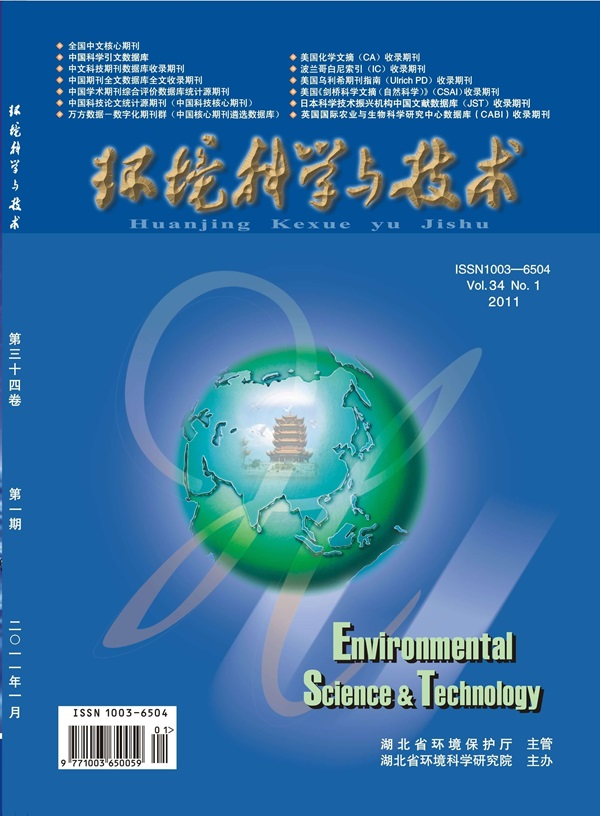湖光岩麻尔湖沉积物钾同位素特征:1900年以来流域侵蚀与人类活动
IF 10.8
1区 环境科学与生态学
Q1 ENGINEERING, ENVIRONMENTAL
引用次数: 0
摘要
钾(K)是生命必需的元素,通过人类活动大量释放,改变了地球化学钾循环。因此,K同位素具有追踪人类活动过程的潜力。湖光岩麻尔湖是一个水文封闭的湖泊,为保存人类活动的历史记录提供了理想的环境。本文研究了中国南方近120年来HML沉积物中K含量和同位素组成(δ41K),以追踪流域K循环和人类活动的影响。结果表明:淋滤液K (Kleachate)主要受煤燃烧的影响,而残渣K (Kresidue)主要来源于基岩侵蚀。从稳定的K含量和δ41K值可以看出,在1950年以前,HML流域的人为干扰最小。在1950年至2000年间,尽管直接的人为输入仍然有限,但由于中华人民共和国成立后人类活动加剧了流域侵蚀。公元2000年以后,δ41氯沙酸盐值的波动和下降反映了人类活动造成的空气污染的变化,如与工业化和随后的环境政策相关的燃煤和车辆排放。这项研究强调了K同位素作为人类对K地球化学循环影响的一种新的示踪剂的可能性。本文章由计算机程序翻译,如有差异,请以英文原文为准。
Potassium Isotopes in Huguangyan Maar Lake Sediments: Catchment Erosion versus Anthropogenic Activity since 1900 C.E.
Potassium (K), an essential element for life, is released in large quantities through anthropogenic activities, altering the geochemical K cycle. K isotopes, therefore, have the potential to trace anthropogenic processes. Huguangyan Maar Lake (HML), a hydrologically enclosed lake, provides an ideal setting to preserve the historical records of anthropogenic activities. This study investigated the K contents and isotopic compositions (δ41K) in recent HML sediments to trace catchment K cycling and human impacts over the past 120 years in southern China. Results show that leachate K (Kleachate) is influenced by coal combustion, while residue K (Kresidue) is mainly derived from bedrock erosion. Prior to 1950 C.E., the HML catchment experienced minimal human disturbance, as indicated by stable K contents and δ41K values. Between 1950 and 2000 C.E., increasing Kresidue contents suggest intensified catchment erosion due to human activities following the founding of the People's Republic of China, though direct anthropogenic inputs remained limited. After 2000 C.E., fluctuations and decreasing δ41Kleachate values reflect varying air pollution from anthropogenic activities such as coal combustion and vehicle emissions associated with industrialization and subsequent environmental policies. This study highlights the possibility of K isotopes as a novel tracer of anthropogenic influence on the K geochemical cycle.
求助全文
通过发布文献求助,成功后即可免费获取论文全文。
去求助
来源期刊

环境科学与技术
环境科学-工程:环境
CiteScore
17.50
自引率
9.60%
发文量
12359
审稿时长
2.8 months
期刊介绍:
Environmental Science & Technology (ES&T) is a co-sponsored academic and technical magazine by the Hubei Provincial Environmental Protection Bureau and the Hubei Provincial Academy of Environmental Sciences.
Environmental Science & Technology (ES&T) holds the status of Chinese core journals, scientific papers source journals of China, Chinese Science Citation Database source journals, and Chinese Academic Journal Comprehensive Evaluation Database source journals. This publication focuses on the academic field of environmental protection, featuring articles related to environmental protection and technical advancements.
 求助内容:
求助内容: 应助结果提醒方式:
应助结果提醒方式:


